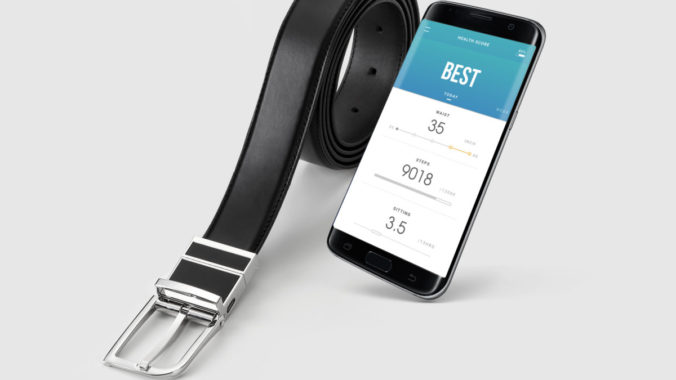Dr. Sean Kang saw evidence of obesity, poor posture, inactivity, and overeating. He wanted to develop a wearable technology that could help, but he was unsatisfied with wrist-worn solutions.
Kang worked several years (2014-2016) as a creative leader at Samsung, where he developed an idea for a smart belt within the company’s internal, incubator, the Creative Lab. That product, called WELT for “wellness belt,” has sensors and an accelerometer embedded within the buckle of a leather belt that can track waist circumference, posture, gait analysis, and movement. If someone overeats or is sitting for more than an hour, the wearer is notified via a bluetooth connection to a smartphone app.
Kang likens the belt to a car’s GPS system, saying, “The belt is gathering the information for people’s health navigation. ”WELT will make its formal debut at CES in Jan. 2019. Samsung Ventures offered seed funding to WELT, which more than doubled its Kickstarter goal by raising $70K+ and also received investment from Born2Global, an entrepreneurial agency within the Korean Ministry of Science.
WELT has gained popularity in Korea and Japan. (WELT is also available in Amazon’s U.S. store.) The product—billed as the world’s first smart belt for health care—has won awards from the Korean Medical Academic Association as well as from Good Design and Wadiz, a Korean crowdfunding competition.
WELT’s emphasis has currently been on men’s health for the simple reason that fewer women wear belts. There could be future uses in a sports setting, although for now it’s suited more for office workers. Kang said the module design can easily be adapted for belts of any kind. The buckle’s orientation and location provide at least one clear advantage over a watch or band.
WELT is also working on software algorithms that can benefit the elderly, both in fall detection and prevention. Kang said certain changes in gait speed and frequency could signal the risk of a fall.

Leave a Reply